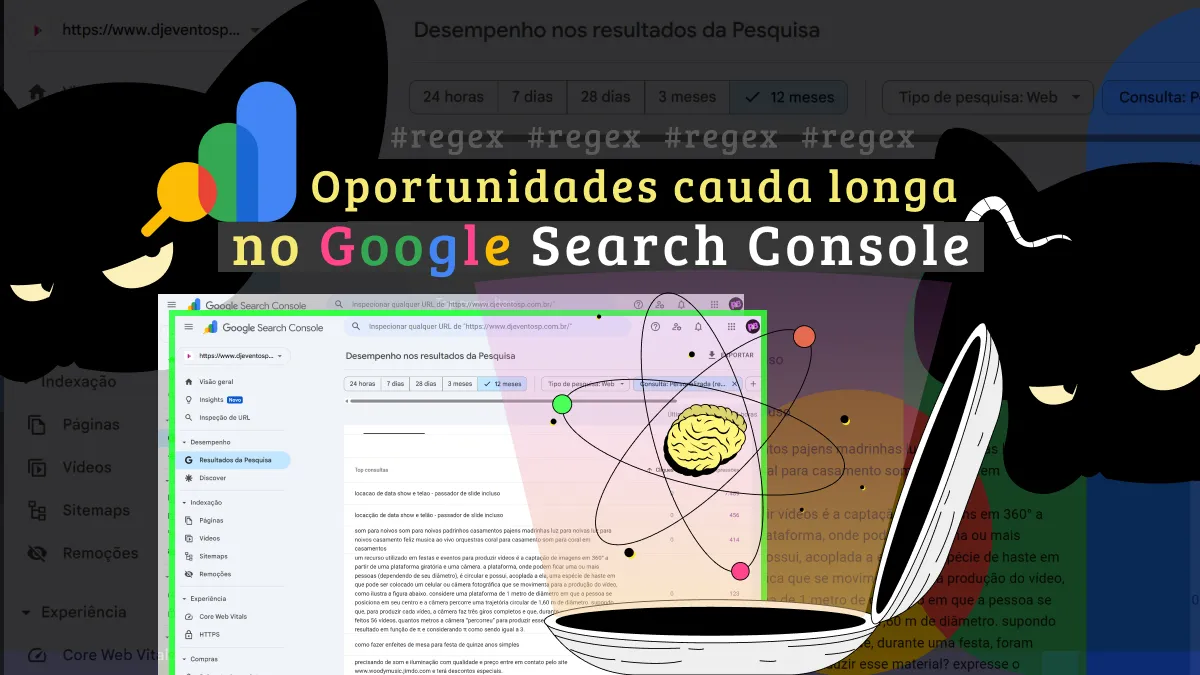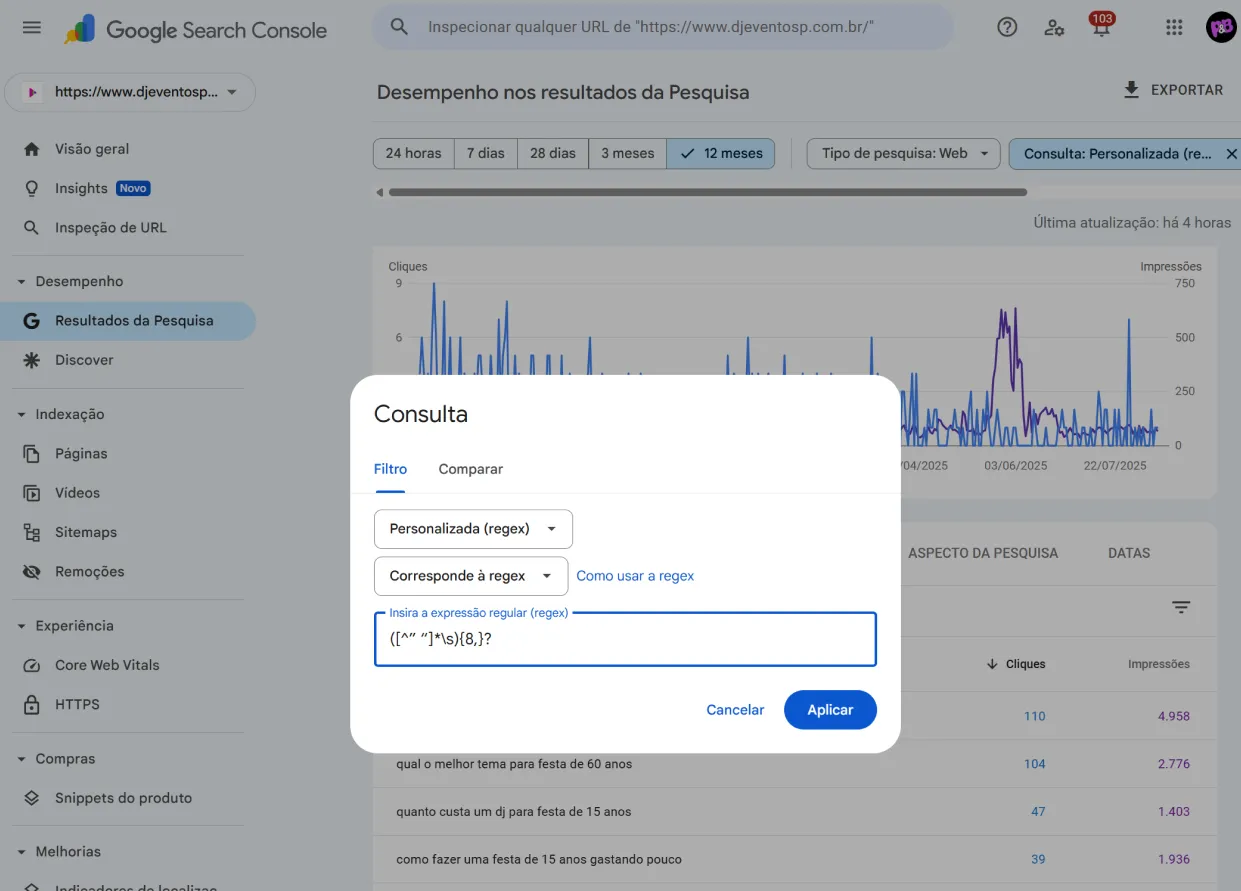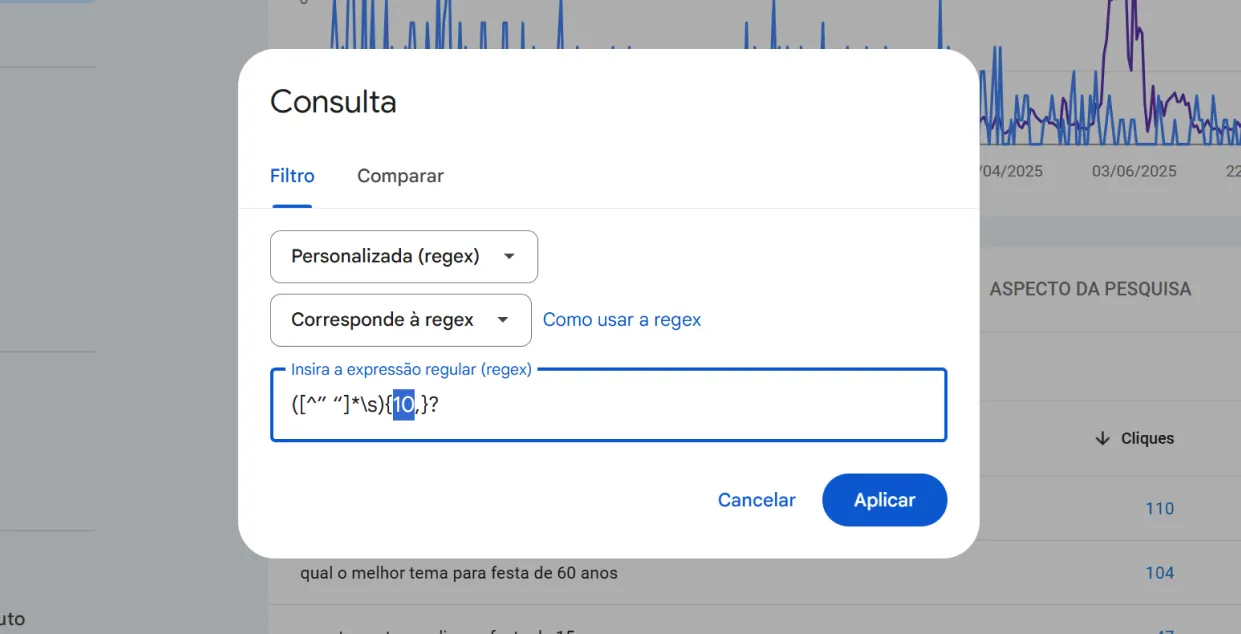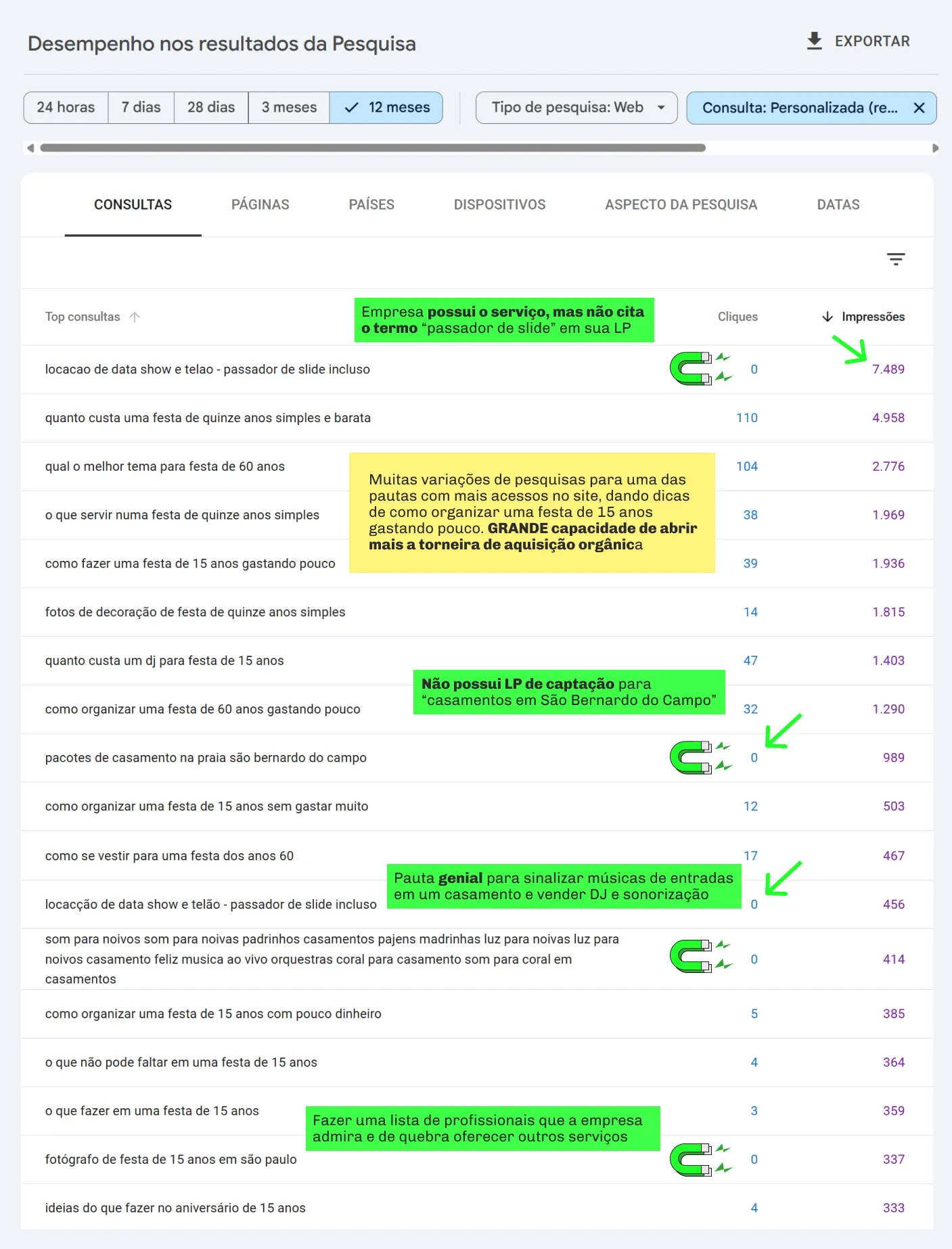Discover Long-Tail Opportunities in Google Search Console
Use a simple regex technique to spot long-tail queries that mention your site in Google and uncover how they might reveal prompts used in AI tools like AI Overviews, Gemini, and ChatGPT.

Did you know you can use regular expressions in Google Search Console to filter long-tail keywords and uncover powerful visibility opportunities? With this simple technique, you can identify the most extensive search queries that led users to your site—and gain deeper insight into how your content is being discovered.
These longer searches, often 10 words or more, tend to reveal specific intent, complex questions, and even potential prompts used in AI tools like ChatGPT, Gemini, or Perplexity. While there’s no direct tool yet to track when your brand appears in AI-generated responses, these queries can be strong indicators that your content is being referenced behind the scenes.
By analyzing these terms, you not only understand how users are finding you, but also how your content might be shaping automated answers in a digital landscape increasingly driven by artificial intelligence. It’s a smart way to look beyond the click and recognize the strategic role your site may be playing in the broader ecosystem.
In this post, we’ll show you a highly effective method to identify long-tail keywords using regular expressions in Google Search Console—and how to turn that data into competitive advantage.
What are Long-Tail Keywords?
Long-tail keywords are search queries that are longer, more specific, and usually signal a clear intent. While they typically have lower search volume, they deliver higher conversion rates because users know exactly what they are looking for.
Examples
| Short Keyword | Long-Tail Keyword (Highly Specific) |
|---|---|
| DJ | DJ for outdoor wedding in São Paulo |
| party lighting | scenic lighting for 15th birthday party with LED dance floor |
| event setup | company that provides stage, sound, lighting, and generator for outdoor events in São Paulo |
| professional sound | sound rental with line array speakers and wireless mics for corporate events |
| wedding DJ | DJ specialized in wedding ceremony and party with custom playlist |
| kids party DJ | DJ with interactive games and current music for kids parties with colorful lighting |
| wedding setup | full setup with dance floor, scenic lighting, ambient sound, and LED screen for countryside weddings |
| sound and light service | company offering full sound, lighting, and DJ package for 40th birthday party |
| DJ with LED dance floor | hire DJ with LED dance floor featuring birthday girl’s name for 15th birthday |
| corporate event setup | modular setup with stage, LED screen, ambient sound, and technical lighting for business conventions |
In today’s landscape, where AI-powered search assistants dominate, these long queries often mirror the type of prompts users feed into ChatGPT, Gemini, or Perplexity. If your site is being discovered through such queries, there’s a good chance your content is indirectly fueling AI-generated answers.
Regex Technique to Identify Long-Tail Queries in GSC
Google Search Console (GSC) allows the use of regex filters to analyze queries. With the right pattern, you can filter queries by the number of words and isolate searches with strong intent.
Regex Pattern for 10+ Words
([^” “]*\s){9,}Breaking It Down
([^” “]*\s)→ captures a “word” followed by a space{9,}→ repeat at least 10 times- Together → only matches queries with 10 words or more
Step-by-Step Guide
- Go to Google Search Console → Performance → Search Results.
- Click on + New → Query → Custom (Regex).
- Paste the regex above and adjust the number of words (e.g.,
{7,}for 8+ words). - Review the filtered list to uncover queries that drove traffic to your site.
These queries often highlight highly specific needs, niche questions, or even hints of AI prompts.


How to Leverage These Insights
Spotting long-tail queries is more than an SEO hack — it’s a way of understanding how real users (and AI systems) are interpreting your content.
- Create ultra-targeted articles: Answer the exact questions your audience is asking.
- Strengthen topical authority: Fill content gaps competitors aren’t covering.
- Improve CTR: Craft titles that directly match the detailed search.
- Predict trends: Long queries often signal emerging topics before they go mainstream.
The beauty? You’re not just optimizing for Google anymore — you’re positioning your site to be a trusted data source for AI assistants.
Practical Example: Events Production Industry Leader
When analyzing GSC for a leading events company, we spotted searches like:
- “company that sets up stage, sound, lighting, and generator for outdoor events in New York”
- “wedding DJ specialized in both ceremony and after-party with customized playlists”
- “corporate sound rental with line array speakers and wireless mics for keynote presentations”

These hyper-specific queries revealed not just user intent, but also the type of input likely being used inside generative AI platforms.
Benefits of Tracking Long-Tail Queries
| Practical Benefit | Strategic Value |
|---|---|
| Users closer to conversion | Stronger buying intent |
| Fewer competitors | Less SERP competition |
| More attractive, specific titles | Higher CTR |
| Answers real-world questions | Increased relevance |
| Understand user journey | Behavioral insights |
| Potential AI mentions | Visibility in AI-generated results |
| Stronger topical authority | Niche leadership |
| Higher engagement & dwell time | Better UX |
| Fresh content ideas | Data-driven editorial planning |
| Smarter SEO strategy | Continuous optimization |
The exemplo above, for a Event Pruction Business, we could change service copy including terms that we don’t index so well.
Final Thoughts
Your next breakthrough content idea might be hiding in a long-tail query you’ve never paid attention to.
This isn’t just about SEO — it’s about understanding the subconscious of your audience. Long queries show how people actually think and ask. They expose needs before users even know how to articulate them.
When you start connecting those dots, you’re not just ranking better — you’re becoming part of the knowledge base that both people and AI rely on.
César Canteiro, Digital Strategist at Pink and Brain
A Pink and Brain é formada por um time de especialistas sêniores com ampla experiência no universo digital. Atuamos estrategicamente em áreas como desenvolvimento de produto, branding, aquisição de clientes, engajamento, retenção, automação e marketing de conteúdo, combinando criatividade com performance. Nossa redação é responsável por produzir e validar conteúdos que traduzem conhecimento técnico em linguagem acessível, sempre alinhados às melhores práticas de SEO, UX writing e comunicação de marca.
Pink and Brain Rats has 41 articles published on Pink and Brain. Read more.